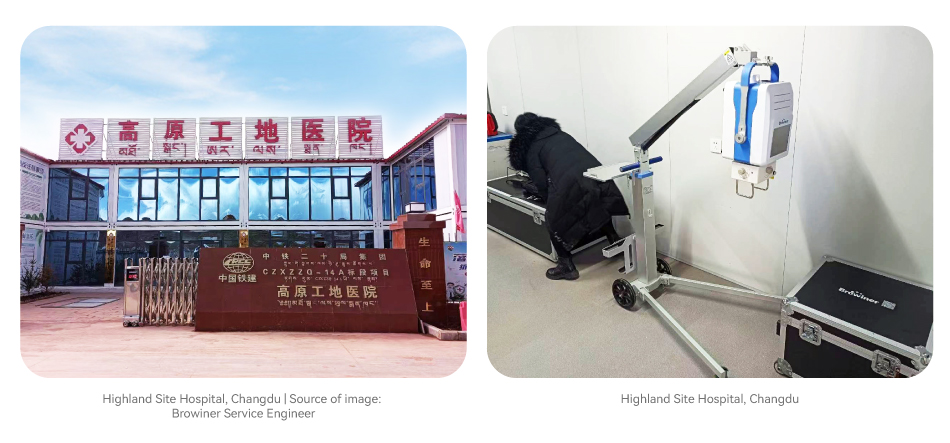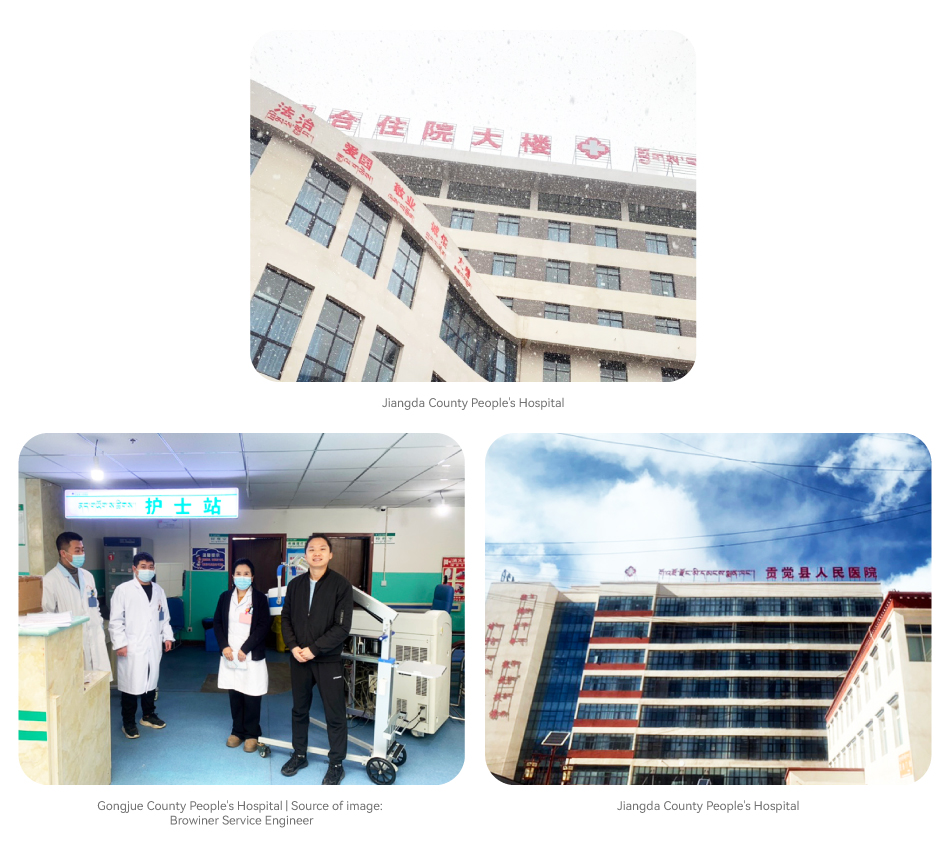
On the top of a thousand hills and at the source of all waters, the mysterious and magnificent roof of the world - Tibet - is always fascinating. The power of nature has created breathtaking beauty, however, it has also brought great challenges to the health and lives of local residents. The harsh natural environment of Tibet, such as high altitude and thin air, raises the risk of diseases such as congenital heart disease and plateau heart disease. Meanwhile, endemic diseases such as kaschin-beck disease also make residents suffer from illnesses.
In this article, let's focus on the Tibetan city of Changdu, to learn the story of modern technology tackling medical issues of Tibetans and witness Browiner blue shines on the roof of the world.
Changdu: Solving medical challenging issues with technology
Located in eastern Tibet, Changdu is a must stop for the Sichuan-Tibet Railway. Its average altitude is over 3,500 meters and almost all of it is a cold, oxygen-deficient plateau area, where residents face a harsh environment of extreme cold, low oxygen and high UV irradiation.
In order to give residents access to early and good medical care, Changdu's healthcare providers developed a mobile healthcare solution that features full use of portable devices. It breaks down the barriers of the extreme lack of space and specialist medical staff, thus building a bridge between the hospital and the residents.

The hospital scientifically manages and distributes portable DR, some of which is sent to the front line of the Sichuan-Tibet Railway to safeguard the health and safety of railway workers, and the rest are being stationed in villages and towns as long-term medical guardians to ensure the health of residents.
A safeguard for the builders of the Sichuan-Tibet Railway
The Sichuan-Tibet Railway is the second domestic railway into Tibet in China, considered to be the most complex project in the history of the world's railways, with difficulties even exceeding those of the Qinghai-Tibet Line. The construction of Ya'an-Linzhi section, which passes through Changdu, is estimated to last 10-12 years and is the most arduous and challenging section of the Sichuan-Tibet Railway to build.
Statistics show that acute mountain sickness and lateau trauma are the major emergency and severe cases of the Sichuan-Tibet Railway Project, with an incidence rate of 30%-90%. Acute mountain sickness may deteriorate into acute severe mountain sicknesses such as high altitude pulmonary edema, and if not treated in time, the mortality rate can be above 50%.

For reasons such as acute plateau diseases and plateau trauma are difficult to be treated in time and the technical level of medical institutions along the route is still insufficient, the treatment for plateau diseases along the Sichuan-Tibet Railway faces significant challenges.
In recent return visits, it was found that portable DR has significant implications in terms of guaranteeing the Sichuan-Tibet region as it is now widely used in the highland site hospital in scenarios with high frequency. As an emergency equipment for high altitude sickness, it can diagnose the condition in time to prevent ordinary high altitude sickness from developing into high altitude pulmonary oedema. Also, the portable DR can serve as a means of periodic inspection for occupational diseases. Sichuan-Tibet Railway workers may be exposed to dust and other occupational disease hazards when they are engaged in highland operations. DR inspection is undertaken to screen for occupational contraindications and to ensure the occupational health and safety of workers.
Making quality healthcare accessible to remote residents
The Changdu city is located in the bosom of the mountains with a long distance between the counties and inconvenient traffic. It takes one day to commute from the county to the city and there is only one shuttle bus a day. If there is a heavy snowfall, it will be impossible to travel for several days. The extreme inconvenience of transport makes it daunting for residents to go to the hospital as long as they can tolerate their ailments.
County hospitals in Gongjue, Dingqing and Jiangda counties under Changdu city have distributed portable DR to township health centers so that residents can receive examinations at their doorstep. For difficult cases, the images will be transmitted to hospitals above the municipal level through the wireless network, which allows specialists to assess the medical conditions and make further diagnosis and treatment arrangements.

The portable DR is simple to operate and can be quickly implemented even by primary care staff. It is easily transportable and mobile, enabling medical staff to carry it wherever it is needed, even at high altitudes, without being affected by the environment or the travel distance. The elderly and those with limited movements can enjoy the comfort of a home consultation.
According to the hospital, the arrival of Browiner portable DR in the villages allows suspected patients with high altitude heart disease and congenital disease to be diagnosed in time, which strives for the best treatment time and increases the cure rate of patients.
Technology has changed people's lives. Mobile medical solutions have made it possible for high-quality medical services to spread effortlessly to remote areas of Tibet, no longer trapped by mountains and distance. In this healthcare bridge built in Changdu, Tibet, Browiner portable DR has become a bright landscape.